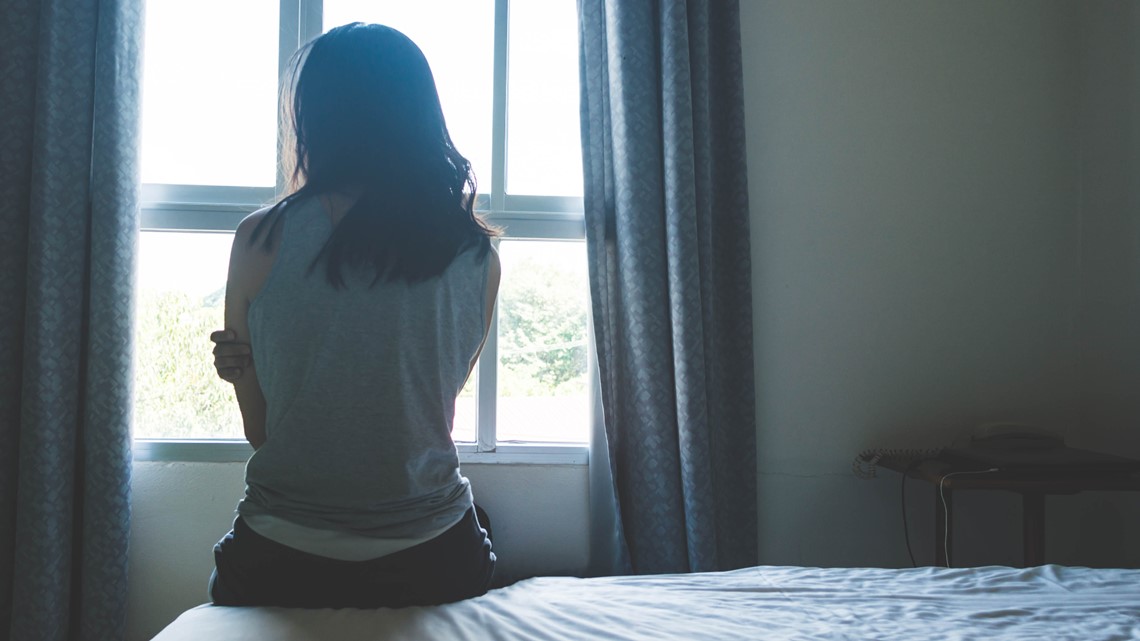Child sex trafficking report shows cases tied to half of Mecklenburg's zip codes – WCNC

CHARLOTTE, N.C. — In the halls of Present Age Ministries‘ Concord offices, portrait after portrait lines the walls. At first, the pictures are unassuming — each one shows a girl, holding flowers. In some, the flowers cover the girl's face. In others, the girl has her back turned to the camera. To the viewer, they are anonymous, but to those who know the background, their stories are impactful.
They are survivors of child sex trafficking.
Hannah Arrowood, who founded and leads the nonprofit focused on helping exploited girls, said the portraits are done after a survivor completes her program. The girl gets a portfolio honoring her and her family's hard work clawing out of the darkness and blossoming into a new life. Her picture is also placed on the wall as a message to all: There is hope.
“A lot of times, we think it's hopeless, and it's not,” Arrowood said. “I can sit here and tell you story after story of girls whose lives are forever changed.”
For the latest breaking news, weather and traffic alerts, download the WCNC Charlotte mobile app.
Those success stories fuel the Present Age team, pushing them through what can be very heavy work with heartbreaking stories and a problem that does not discriminate.
“I think people would be not only alarmed, but shocked because it's happening everywhere,” Arrowood said. “It's not just in these specific areas that one might think.”
That fact became clear after Present Age Ministries, alongside other partner groups and agencies in the Charlotte Metro Human Trafficking Task Force, conducted a study on the scope of child exploitation in Mecklenburg County, finding cases linked to 42, or half, of the county's zip codes.
“It crosses every class, race, geography, socioeconomics,” Arrowood said. “It doesn't just look one certain way.”
The top zip codes for cases were 28269, 28208, 28213, 28216, and 28212, in what has become known as Charlotte's “crescent” area, or less affluent neighborhoods circling from west to north to east of the city.
However, there were also cases linked to zip codes in the county's more affluent “wedge,” with impacted zip codes covering Ballantyne, Cotswold, South Park and South End areas.
You can stream WCNC Charlotte on Roku and Amazon Fire TV, just download the free app.
The report found 170 suspected and confirmed child sex exploitation cases in 2020, 2021 and 2022 combined.
The findings highlight a microcosm of the larger problem statewide. Polaris, a nationwide anti-human trafficking organization, ranks North Carolina as ninth in the country for calls to its trafficking hotline.
Just as the backgrounds of the impacted children can vary, so can the manifestation of the problem, and Arrowood said it usually does not look like what is frequently portrayed: A kidnapped child, locked away, being separated from, or even victimized by, their own parents.
“The norm is it's somebody from the outside,” Arrowood said, noting the children sometimes continue to live at home and go to school while they're being trafficked. “A lot of times, traffickers will groom and target online… Every social media platform, we've seen victimization and recruitment come from.”
Because the problem frequently comes from outside the family network and transpires in secrecy, Arrowood said, in some cases, parents have no idea.
“A child can be victimized for up to two years before they're ever identified,” Arrowood said. “We see the gamut. We see where they're living at home, and it's happening, and their parents have no clue. We see it where they are leaving for a day or two and then coming back, and it's happened when they were gone. And then we see where they actually leave with their trafficker and go to another state and go to another city and then return months later.”
Disappearing for long stretches is just one sign of being trafficked.
Arrowood suggests parents also look out for new branding or tattoos, possessions, like bags or shoes, that would otherwise be out of their means, strange sleeping patterns, and extreme mood or behavioral changes.
While discovering trafficking can be earth-shattering for a family and may seem insurmountable, Arrowood said with the right support, there is a chance to emerge and turn over a new leaf.
“We really try to create an environment that they know that they have people that believe in them,” Arrowood said. “The reality of it is they just need people to walk with them through the mess, and most of the time, they'll do the work.”
Watch the extended interview with Hannah Arrowood, discussing the top three life factors that can lead kids to fall victim to a trafficker, what makes getting legal justice in these cases uniquely difficult, and who is on the frontlines of finding these secret cases.
Contact Vanessa Ruffes at [email protected] and follow her on Facebook, Twitter and Instagram.
 ABOUT PBJ LEARNING
ABOUT PBJ LEARNING
PBJ Learning is a leading provider of online human trafficking training, focusing on awareness and prevention education. Their interactive Human Trafficking Essentials online course is used worldwide to educate professionals and individuals how to recognize human trafficking and how to respond to potential victims. Learn on any web browser (even your mobile phone) at any time.
More stories like this can be found in your PBJ Learning Knowledge Vault.
This “Eyes on Trafficking” story is reprinted from its original online location.
ABOUT PBJ LEARNING
PBJ Learning is a leading provider of online human trafficking training, focusing on awareness and prevention education. Their interactive Human Trafficking Essentials online course is used worldwide to educate professionals and individuals how to recognize human trafficking and how to respond to potential victims. Learn on any web browser (even your mobile phone) at any time.
More stories like this can be found in your PBJ Learning Knowledge Vault.
